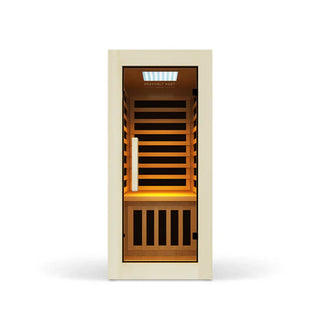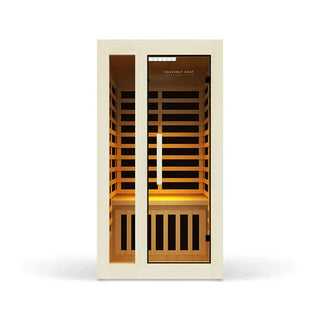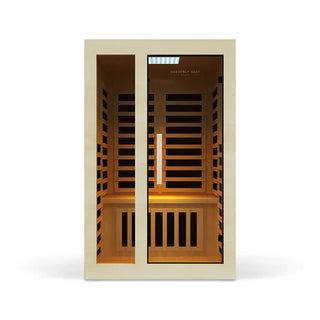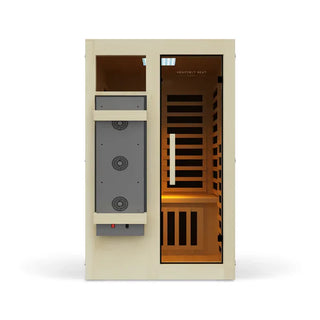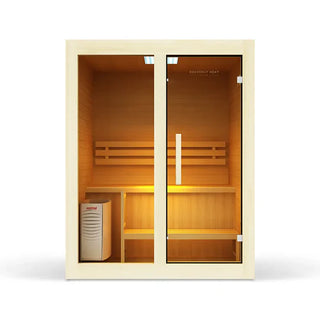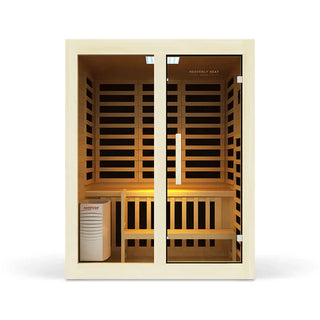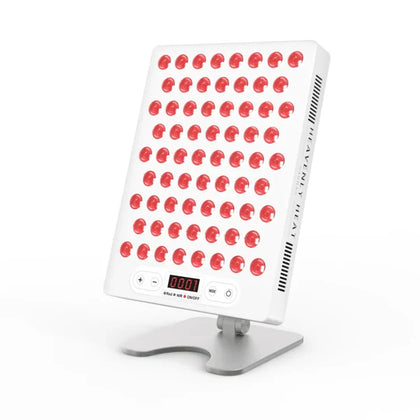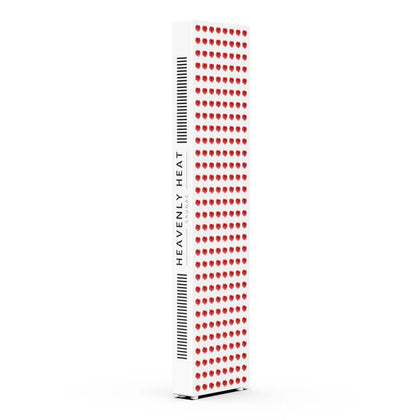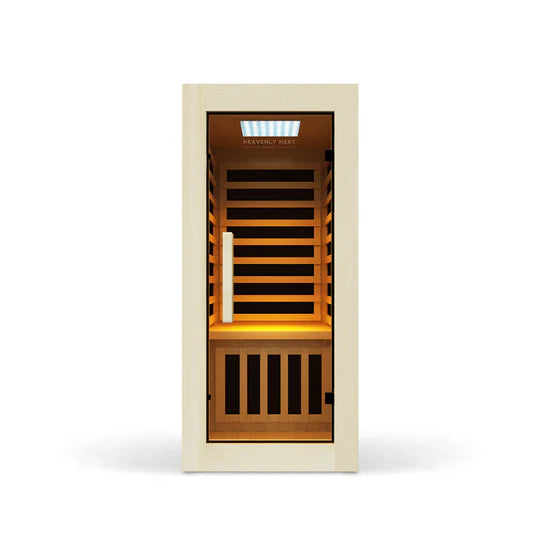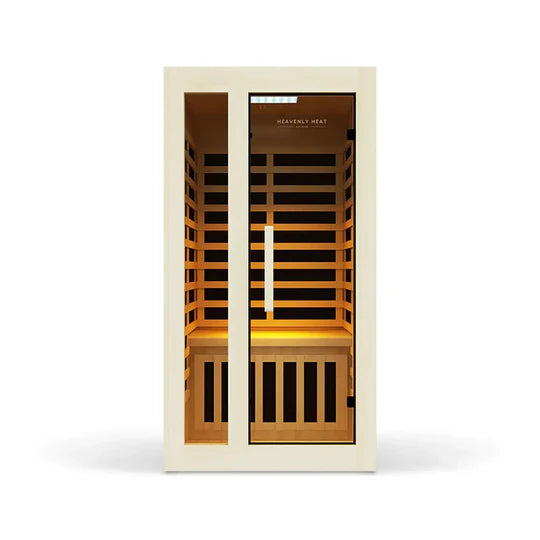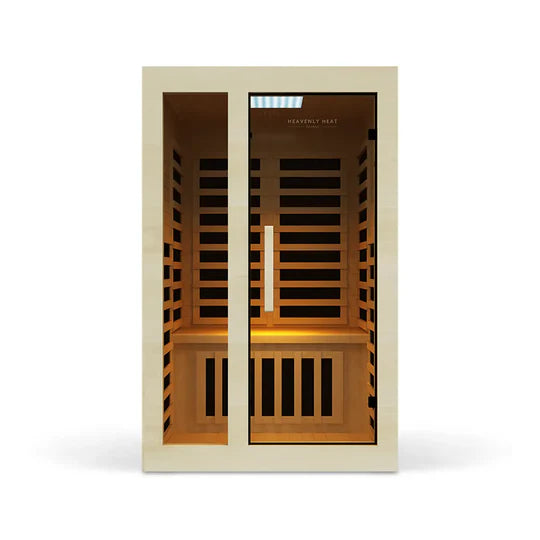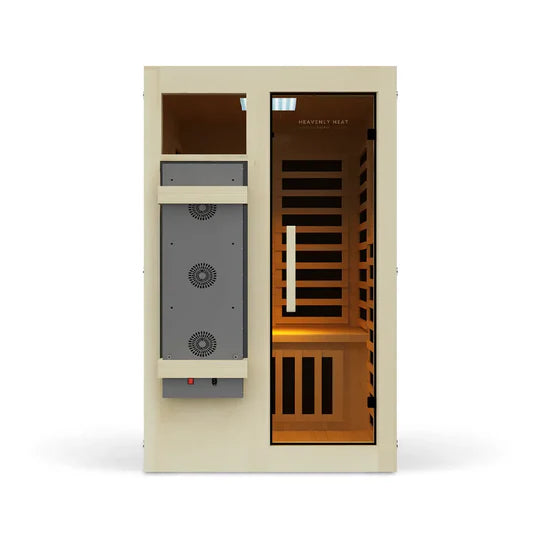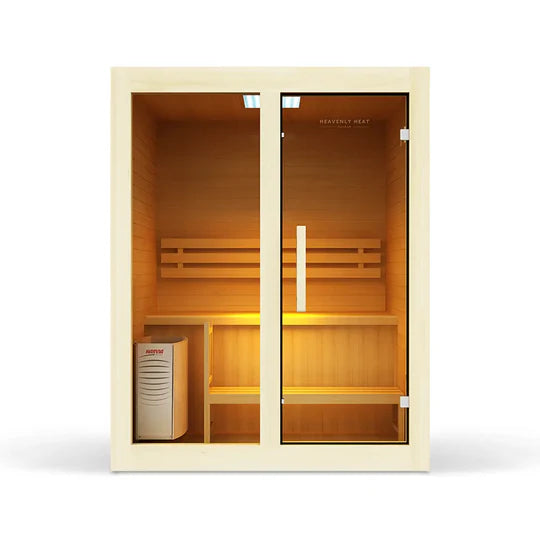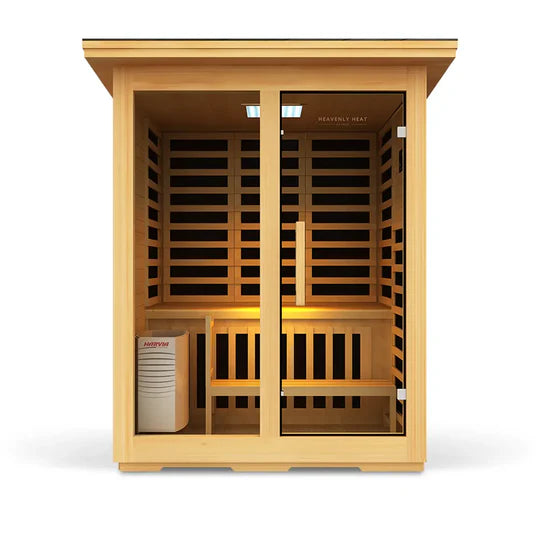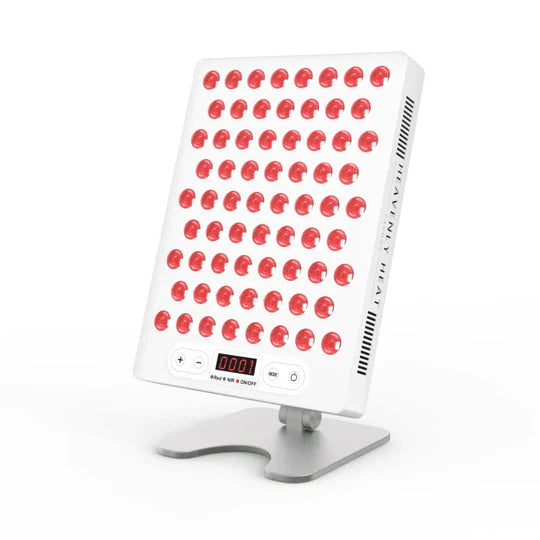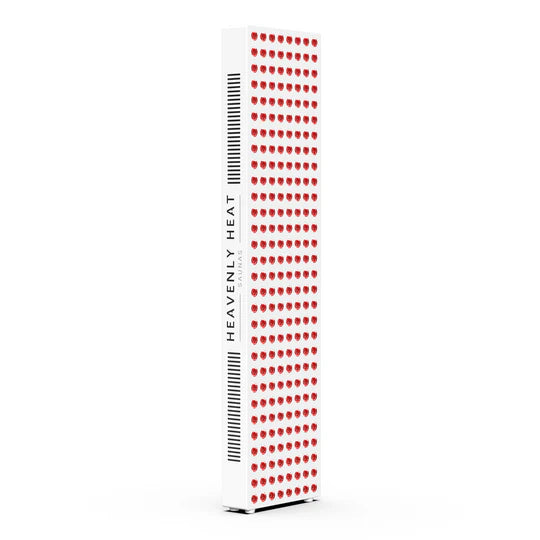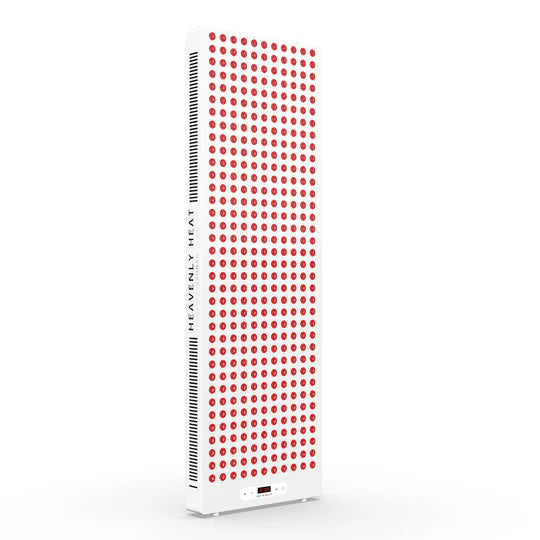How Long Does it Take For Sauna to Heat Up?

Curious about how long it takes for your sauna to heat up? Whether you're new to sauna use or just looking to optimize your experience, understanding the heating time can make all the difference.
From sauna type to heater size, discover the factors that influence how quickly your sauna reaches the perfect temperature.
Key Takeaways
-
Heating time varies: It takes about 15-30 minutes for most saunas to reach optimal temperature.
-
Heater type matters: Infrared saunas heat up faster than traditional ones.
-
Insulation speeds up heating: Better insulation keeps heat inside, reducing warm-up time.
-
Outside temperature affects heating: Cold weather can slow down the heating process.
-
Preheating is key: Preheat your sauna for 20-30 minutes to save time and enhance comfort.
Understanding Sauna Heating Time
- The kind of sauna you have decides how fast it heats up: When you step into a sauna, you’re probably wondering how long it’ll take to reach the optimal temperature. On average, it takes about 15 to 30 minutes for a traditional sauna to heat up, but this can vary depending on several factors. Infrared saunas heat up faster than traditional ones, and steam rooms usually take the least time. That’s because traditional saunas typically run between 70–90 °C, infrared saunas range from 38–65 °C, and steam rooms stay even cooler at around 30–50 °C.

Sauna Type |
Typical Heating Time |
Traditional Sauna |
30 - 60 minutes |
Infrared Sauna |
10 - 15 minutes (to feel initial benefits) |
Steam Sauna |
15 - 30 minutes |
- Bigger saunas and weaker heaters take longer to get hot: The size of the sauna and the power of the heater also influence heating time. A large sauna with a small heater will naturally take more time, while more powerful heaters warm up quicker, saving you waiting time.

Sauna Size |
Capacity |
Heating Time |
Small |
1–2 people |
15–25 minutes |
Medium |
3-4 person |
20-35 minutes |
Large |
5-6 person |
30-45 minutes |
- The room around your sauna can slow things down: Environmental factors, like room temperature and humidity, affect how quickly your sauna heats. If your sauna is in a cold or damp place, expect it to take longer to reach the desired warmth.

- Good insulation keeps the heat in and speeds things up: Even the materials used in construction make a difference. Good insulation acts like a thermal barrier, trapping heat inside and keeping cold air out, which leads to faster and more even heating.
Factors That Affect Sauna Heating Time
Type of Sauna Heater
- Infrared heaters heat the fastest and last the longest: Infrared heaters warm your body directly instead of the air, so they heat up in just 10 to 15 minutes. They're also low-maintenance and can last up to 25 years.

- Electric heaters heat slower but are easier to operate: Electric heaters usually take 20 to 30 minutes to warm the sauna. They’re more convenient than wood stoves since you can turn them on and leave them without extra steps.
- Wood heaters are slower and need manual work: Wood-burning stoves require you to light and maintain the fire, which adds 10 to 15 minutes to the heating time. They're slower and need more effort.
- Gas heaters heat up quickly and save time: Gas sauna heaters, powered by propane or natural gas, warm the sauna faster than electric or wood models. They’re ideal if you're looking to reduce wait time.
- Rock-filled heaters spread heat better and boost steam: Traditional heaters that use more rocks, like rock tower models, distribute heat more evenly. The added stone mass also increases steam, making the sauna feel hotter.

Heater Type |
Fuel Source |
Key Features |
Pros |
Cons |
Infrared Heater |
Electricity |
Emits infrared light to heat the body directly |
Lower energy use, quick heat-up, no humidity |
Doesn’t heat the room air; not a traditional sauna |
Sauna Size and Volume
- Bigger saunas take longer to warm up: When your sauna is large, the heater has to work harder and longer to bring all that extra air up to temperature. More space simply means more time to heat.
- More air inside means you need a stronger heater: The amount of air inside your sauna affects how fast it gets hot. A good way to keep things efficient is to use 1 kilowatt of power for every 50 cubic feet of space.
- Tall ceilings and wide rooms add to heating time: If your sauna has high ceilings or a lot of floor space, it’s going to need more time and energy to reach the right heat level all over.
- A big door can let heat escape and slow things down: Large doors can let heat out when they’re opened, or even leak heat while closed, which makes the whole sauna take longer to get warm.
Insulation and Construction Materials
Insulation inside a sauna can significantly reduce heating time. Better insulation prevents heat from escaping, making it easier to heat the sauna faster.
Materials like fiberglass or mineral wool are commonly used for insulation because they are highly effective.
If the sauna is poorly insulated, it will take longer to heat up as heat escapes quickly. A well-insulated sauna traps heat more effectively, speeding up the process.
Ambient Temperature Outside the Sauna
- Cold air outside makes your sauna heat up slower: When the weather is chilly, your sauna takes more time to warm up because the cold air pulls heat away from the inside. This is especially noticeable in outdoor saunas during the winter.
- Good insulation keeps the heat from escaping: If your sauna isn’t well insulated, heat will leak out faster in cold weather. Using thick insulation and sealing with foil-backed sheets and aluminum tape helps trap the heat inside.
- Warm outside air helps the sauna heat up faster: On warmer days, your sauna doesn’t have to work as hard. The heat stays inside more easily, so it reaches the right temperature quicker.
- Outdoor saunas are more affected by temperature changes: Saunas placed outdoors react more to the temperature outside. If it’s cold one day and warm the next, it can throw off how long it takes for the sauna to heat up and how well it holds the heat.
Ventilation System
A sauna’s ventilation system plays a crucial role in its heating efficiency. Proper air intake and exhaust allow for optimal air circulation, helping the sauna heat up more quickly.
If the ventilation is poor, it can slow the heating process by limiting airflow. A well-maintained ventilation system helps to regulate sauna temperature, improving the overall heating time and ensuring comfort.
How Quickly Does a Portable Sauna Heat Up?
- Most Portable Saunas Heat Up in 15 to 30 Minutes: Portable saunas usually take between 15 and 30 minutes to warm up, depending on the model you’re using. This is the typical time needed to get hot enough for a good session.

- Reaching 150°F Takes Around 20 to 30 Minutes: If you're aiming for a target temperature like 150°F, expect a wait of about 20 to 30 minutes. This falls within the normal heating range for most models.
- Sauna Type and Insulation Change the Heating Time: Infrared saunas heat up faster than steam models. Smaller and well-insulated saunas also reach the desired temperature more quickly than larger or less insulated ones.
- Cold Rooms Slow Down the Heating Proces: If the sauna is set up in a cold area like a basement or garage, it will likely take longer to heat up. Lower surrounding temperatures make the process slower.
- In Room Temperature, It’s Ready in About 20 Minute: When used in normal indoor conditions, most portable saunas are ready in around 20 minutes. This is a useful estimate for everyday setups.

How to Speed Up the Sauna Heating Process?
Optimize Sauna Insulation and Sealing
- Insulation helps your sauna heat up faster: When your sauna is properly insulated, it holds onto the heat better, which means it warms up more quickly and doesn’t waste energy.
- Heat escapes through gaps and makes warming slower: If there are small gaps or cracks in the walls or windows, warm air leaks out and cold air gets in, slowing down the heating process.
- Sealing all the leaks keeps the warmth inside: By sealing all the gaps in your sauna, you make sure the heat stays in and the cold stays out, helping the room heat up faster.
- Using the right insulation material makes a big difference: Mineral wool is a great choice because it traps heat, resists moisture, and is easy to install,perfect for sauna walls and ceilings.
- Good insulation saves money in the long run: Insulating your sauna properly can lower your energy bills over time, especially if you're upgrading an older sauna.
Use a More Powerful or Efficient Heater
- A Powerful Heater Speeds Up Heating Time: A more powerful sauna heater can significantly speed up the heating time. Higher wattage means more heat is produced, warming up the sauna faster.
- Choose the Right Sized Heater for Fast Heating: To ensure fast heating, it’s important to choose a heater that’s the right size for your sauna. For example, you'll need about 1 kilowatt of power for every 1.42 cubic meters of space.
- Electric Heaters Provide Quick and Consistent Heat: Electric heaters are usually the most efficient option, providing quick and consistent heating. They’re designed to warm up your sauna quickly, making them the best choice for fast heating.
Preheat the Sauna in Advance
- Preheating Saves Time and Improves Your Sauna Experience: Preheating your sauna for 20–30 minutes before use ensures it's warm and ready when you are, making your session more enjoyable and effective.

- Set a Higher Temperature to Heat Faster: To speed up the heating process, set the sauna to a higher temperature. Lower settings take much longer to reach the desired warmth.
- Ensure Rocks Are Hot for Steamy Heat: If your sauna uses rocks, check their heat by sprinkling water on them. If it sizzles immediately, the rocks are hot and ready to create steam.
- Replace Old Rocks for Better Heat Efficiency: Old, worn-out sauna rocks don’t retain heat well. Replacing them will help the sauna heat up more quickly and evenly.
- Leave Space Between Rocks for Better Airflow: Don’t overpack the rocks in your sauna. Allowing small gaps between them helps air circulate, speeding up the heating process.
Keep the Sauna Door Closed During Heating
Keeping the sauna door closed during the heating process is essential. If the door is open, hot air escapes, and the sauna will take longer to heat up.
By keeping the door shut, the room heats up more quickly and efficiently. The heat stays concentrated inside, allowing the sauna to reach its optimal temperature faster.
Reduce Ventilation During Warm-Up
- Keep Ventilation Low to Speed Up Heating: Reducing ventilation during the warm-up can speed up the sauna’s heating time. By limiting airflow, heat stays trapped inside, helping the sauna warm up faster.
- Start with Partial Vent Opening: Start with the vents partially closed to prevent too much heat from escaping early on. Once the sauna reaches the target temperature, you can gradually open the vents to let in fresh air without losing too much heat.
- Too Much Airflow Slows Heating: If you leave the ventilation open too much, cooler air constantly enters, slowing the heating process. Adjusting ventilation improves both the warmth and energy efficiency of your sauna.
Use Dry Wood or Fast-Heating Electric Units
- Dry Wood Burns Faster for Quicker Heating: Dry wood burns more efficiently, producing heat faster. Using seasoned wood, dried for 6-12 months, ensures the sauna heats up quickly.
- Wet Wood Slows Down the Heating Process: Wet wood releases steam, which delays the sauna from reaching the desired temperature. Always use dry, well-seasoned wood to avoid this delay.
- Higher Wattage Electric Saunas Heat Up Faster: Electric saunas with higher wattage heat up more quickly and consistently, providing a faster and more reliable heating experience.
Minimize Heat Loss with Smaller Sauna Size
Smaller saunas heat up faster than larger ones because they have less space to warm. If you’re looking to heat up your sauna more quickly, a compact sauna is a better choice.
The smaller the sauna, the less heat is needed to bring the temperature up. Smaller saunas are also easier to insulate, reducing heat loss and improving energy efficiency.
Can You Use a Sauna While It’s Heating Up?
- Using the Sauna Before It Reaches Full Heat Won’t Provide Full Benefits: Entering the sauna before it reaches the ideal temperature may feel tempting, but it won’t provide the full benefits.
- Sauna Feels Cool Before It Reaches Full Temperature: During the heating process, the sauna might feel slightly cool, and your body won't experience the same warmth as when it’s fully heated.
- Sweating Is Less Effective Before the Sauna Reaches Its Ideal Temperature: As the sauna continues to heat, you may start sweating, but the process will not be as effective as when it's at the right temperature.
- Wait for the Optimal Temperature for the Best Results: To get the best results, it’s important to wait until the sauna reaches its optimal temperature range of 150°F to 190°F.

FAQs
How Does Weather Affect the Time It Takes to Heat a Sauna?
Weather affects sauna heating time. Cold or humid conditions slow it down, while warm, dry weather speeds it up. In winter, saunas take longer to heat and retain warmth; in summer, they heat faster with less effort.
Can You Speed Up Sauna Heating with Additional Heat Sources?
To speed up sauna heating, try using a higher-wattage heater or infrared heaters, which heat the air and surfaces quickly. Adding a space heater can help, but be cautious of safety risks. For larger saunas, multiple heating elements can raise the temperature faster and more evenly.
What Is the Fastest Way to Heat Up a Sauna?
Heating a sauna takes 20 to 30 minutes, depending on size, heater type, and insulation. Infrared heaters heat faster than traditional ones. Ensure proper insulation and an appropriately sized heater. Avoid opening the door, as it lets heat escape. Adding water increases humidity, not heating speed.
Does the frequency of sauna use impact how quickly it heats up over time?
Regular sauna use improves heating efficiency and reduces warm-up time. Proper maintenance is essential to sustain performance. Without maintenance, excessive use can cause wear, reducing efficiency and increasing energy consumption. Frequent use leads to faster heat-up times.


